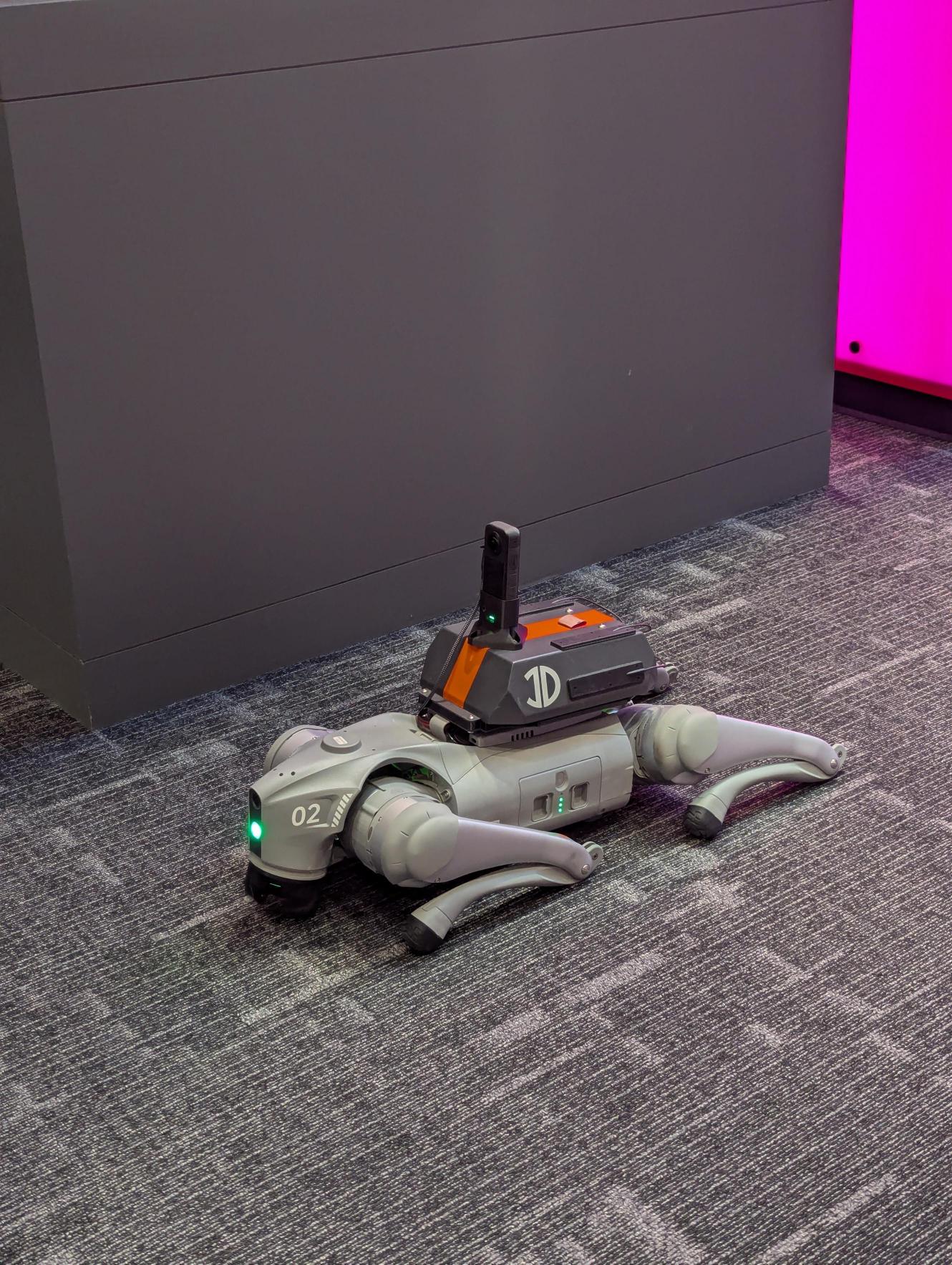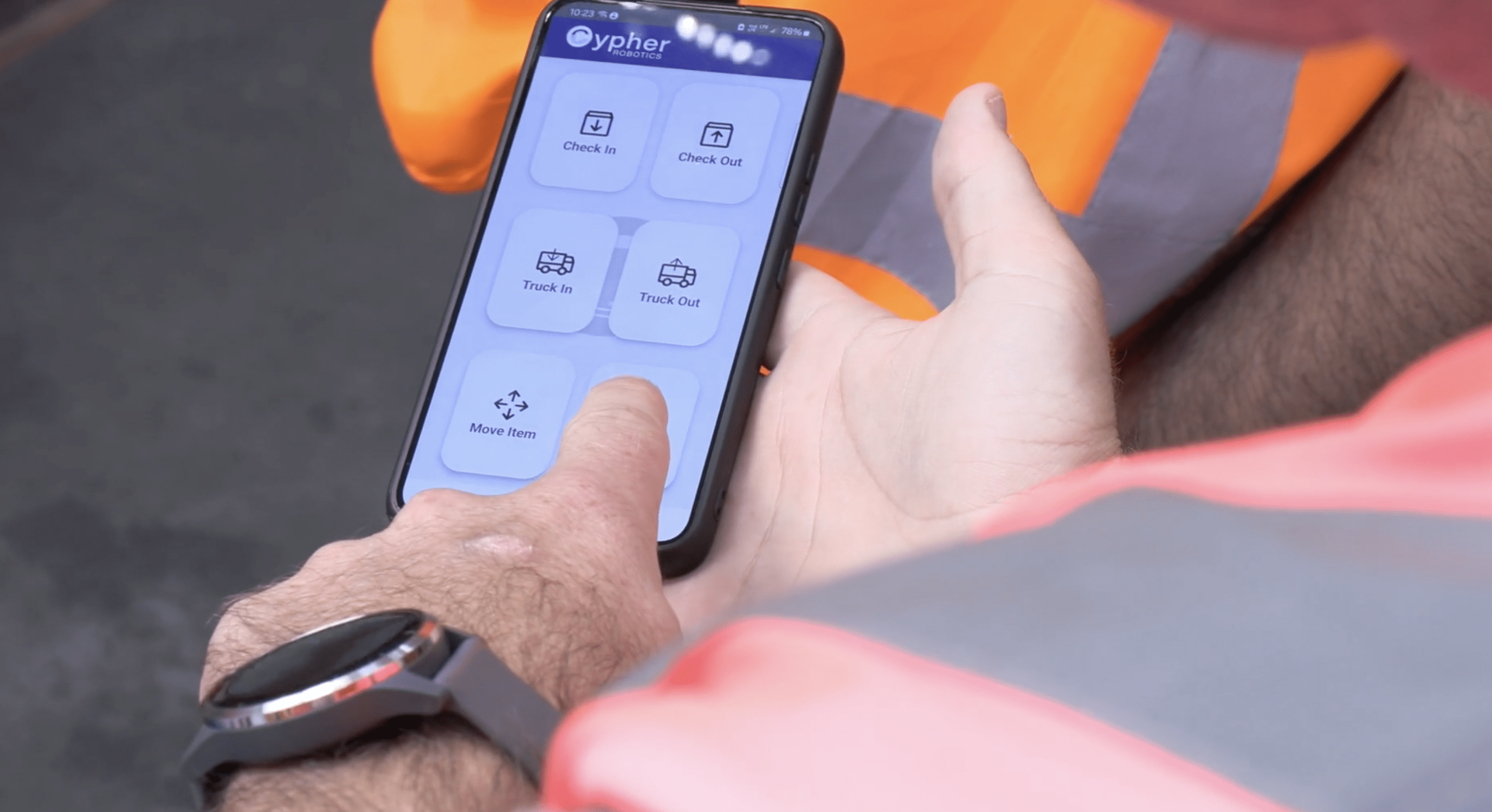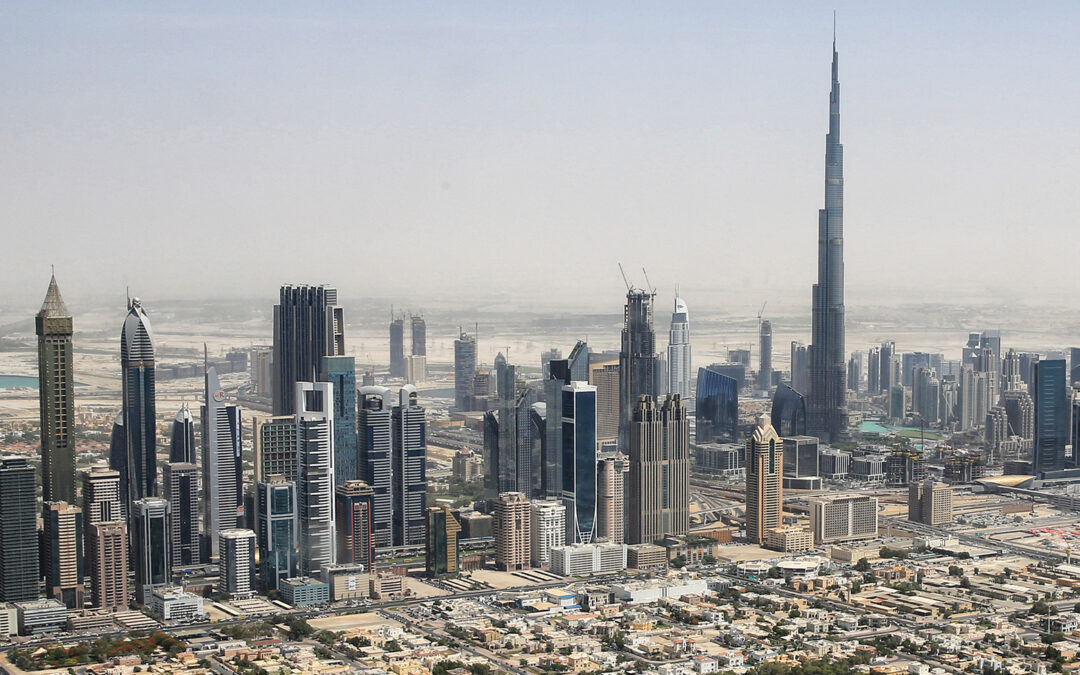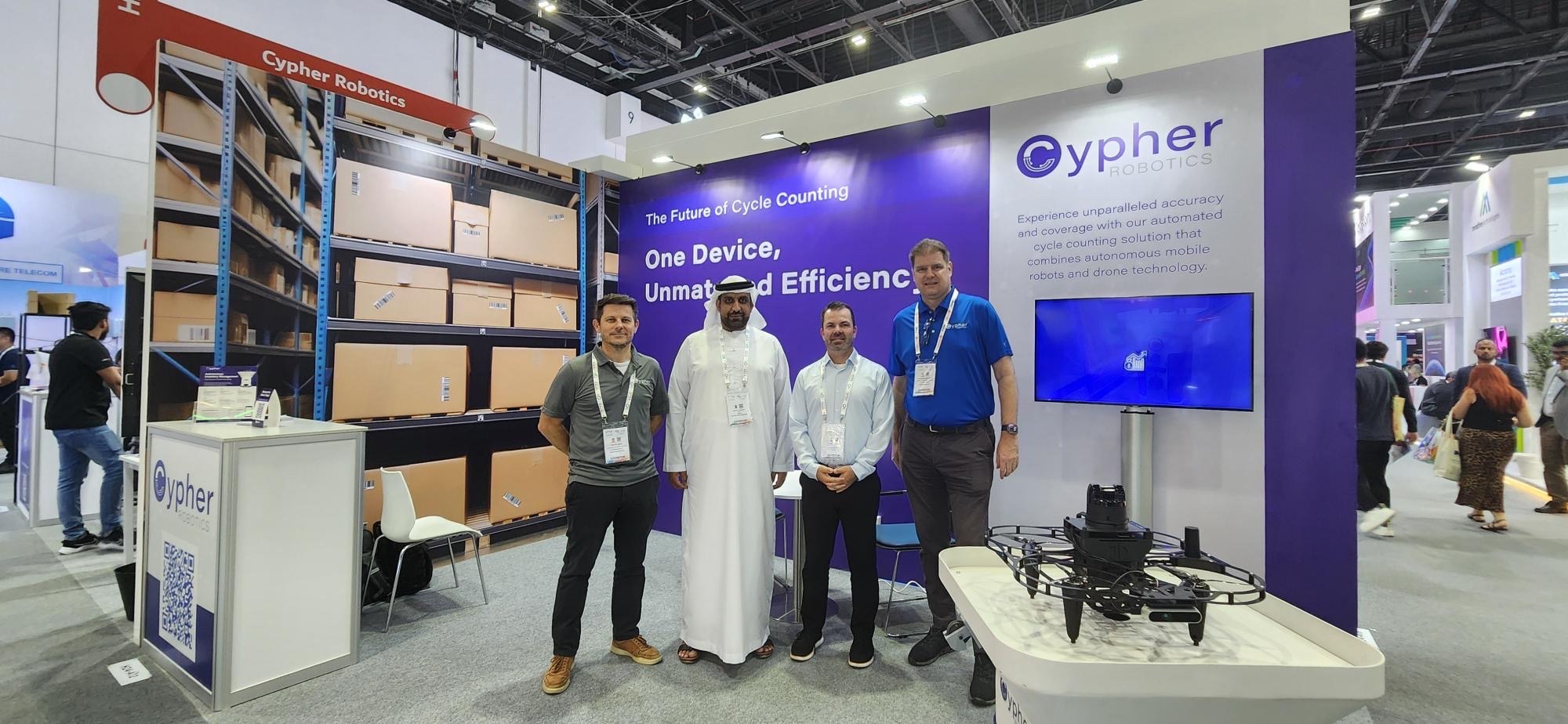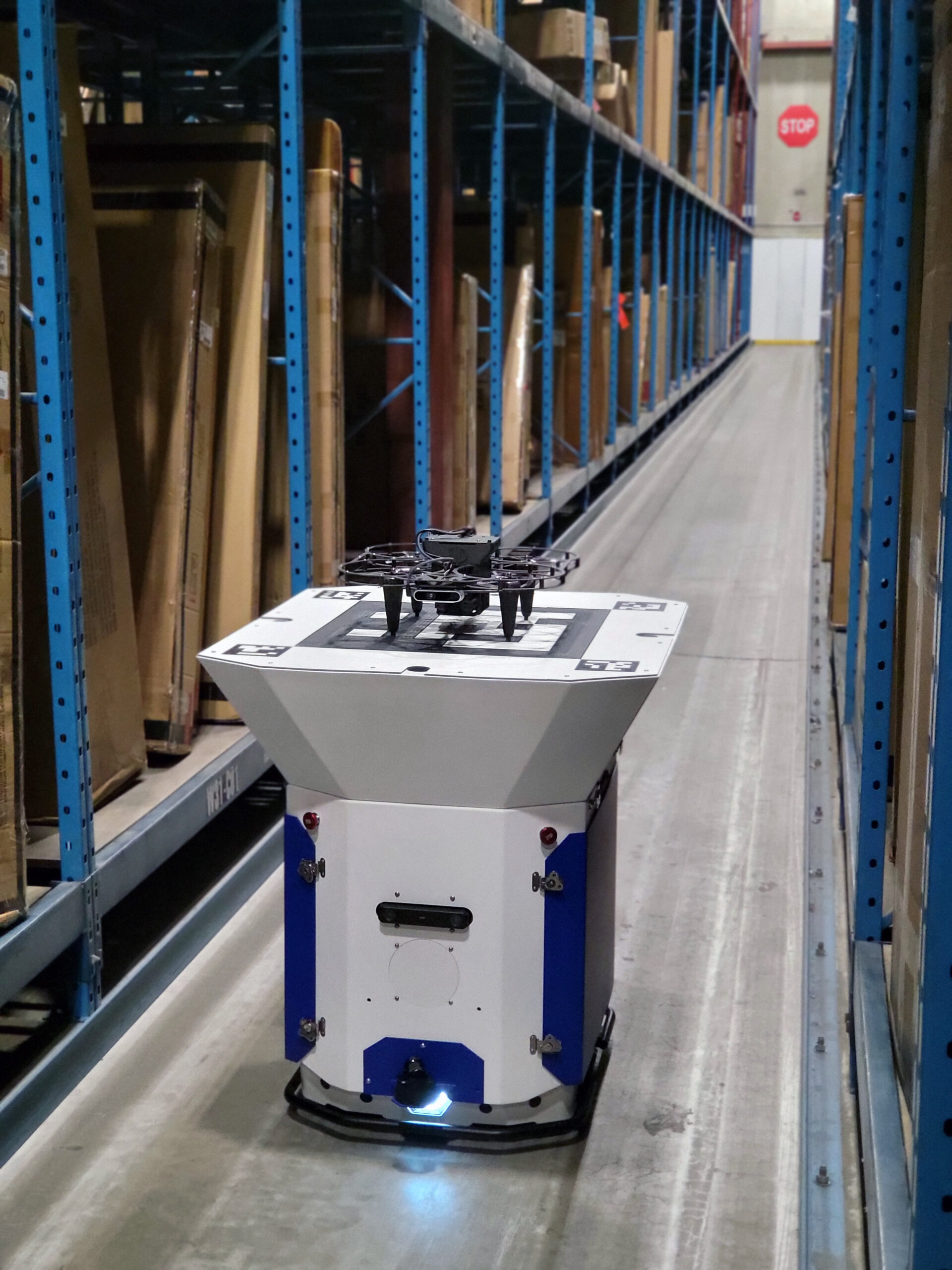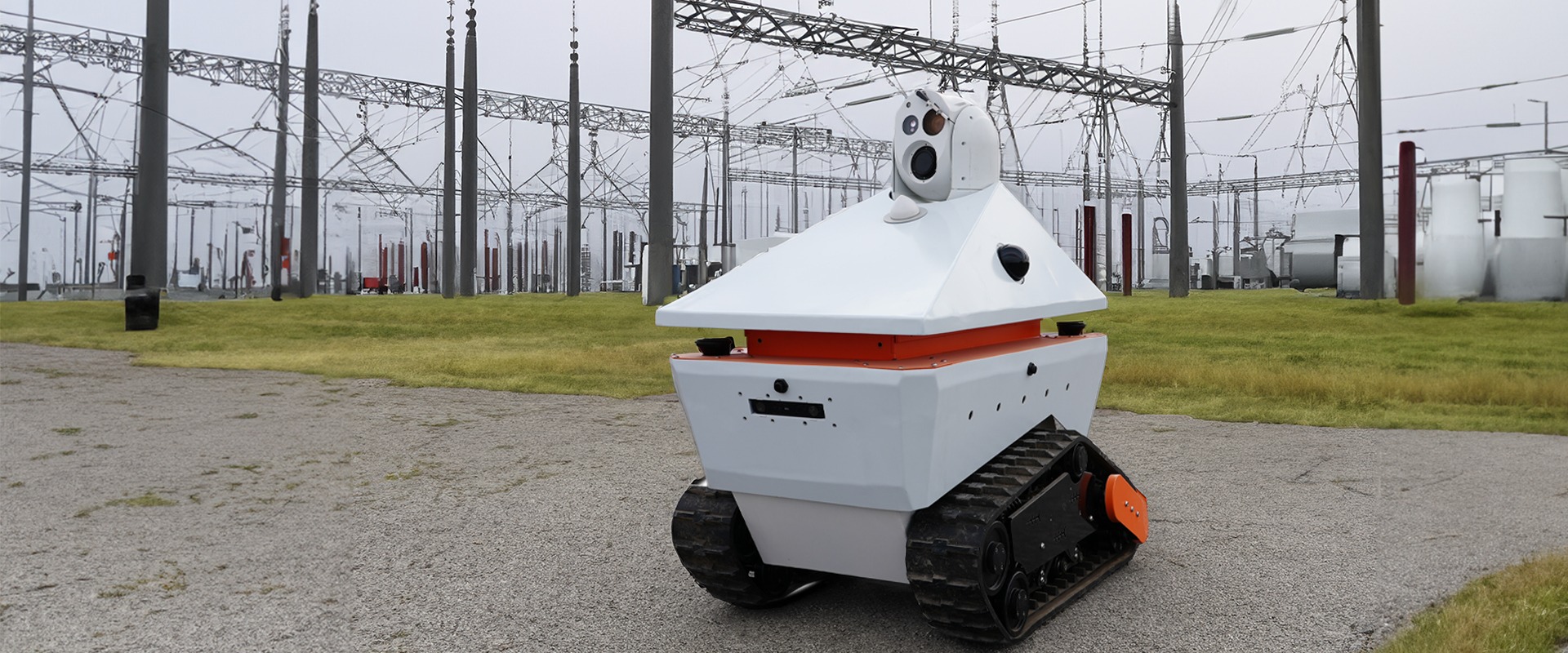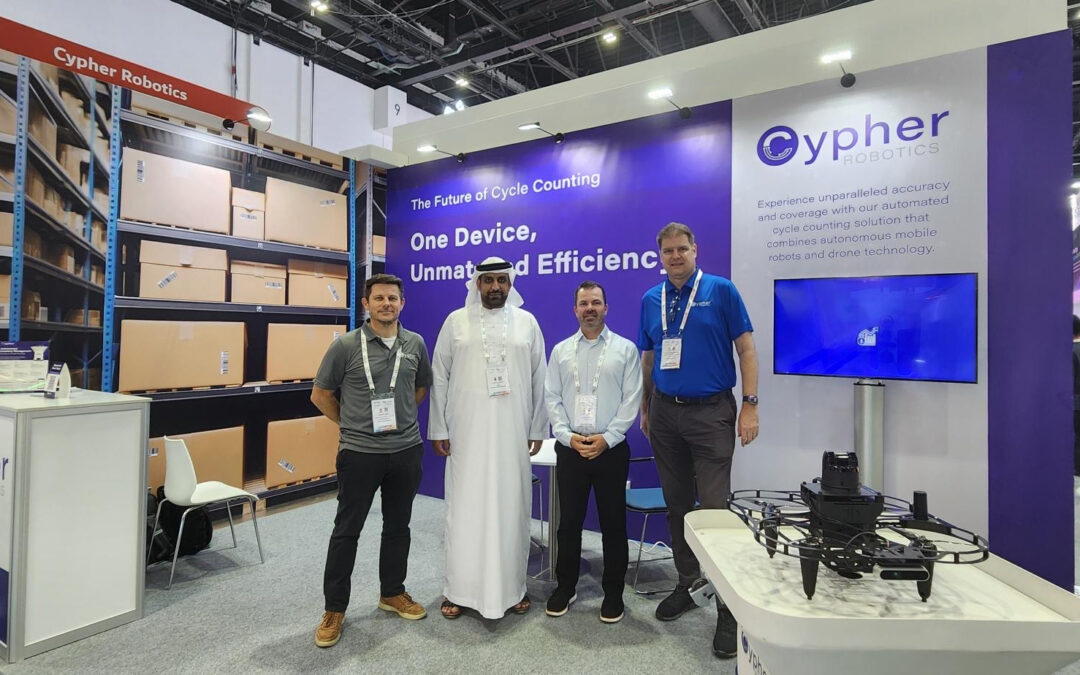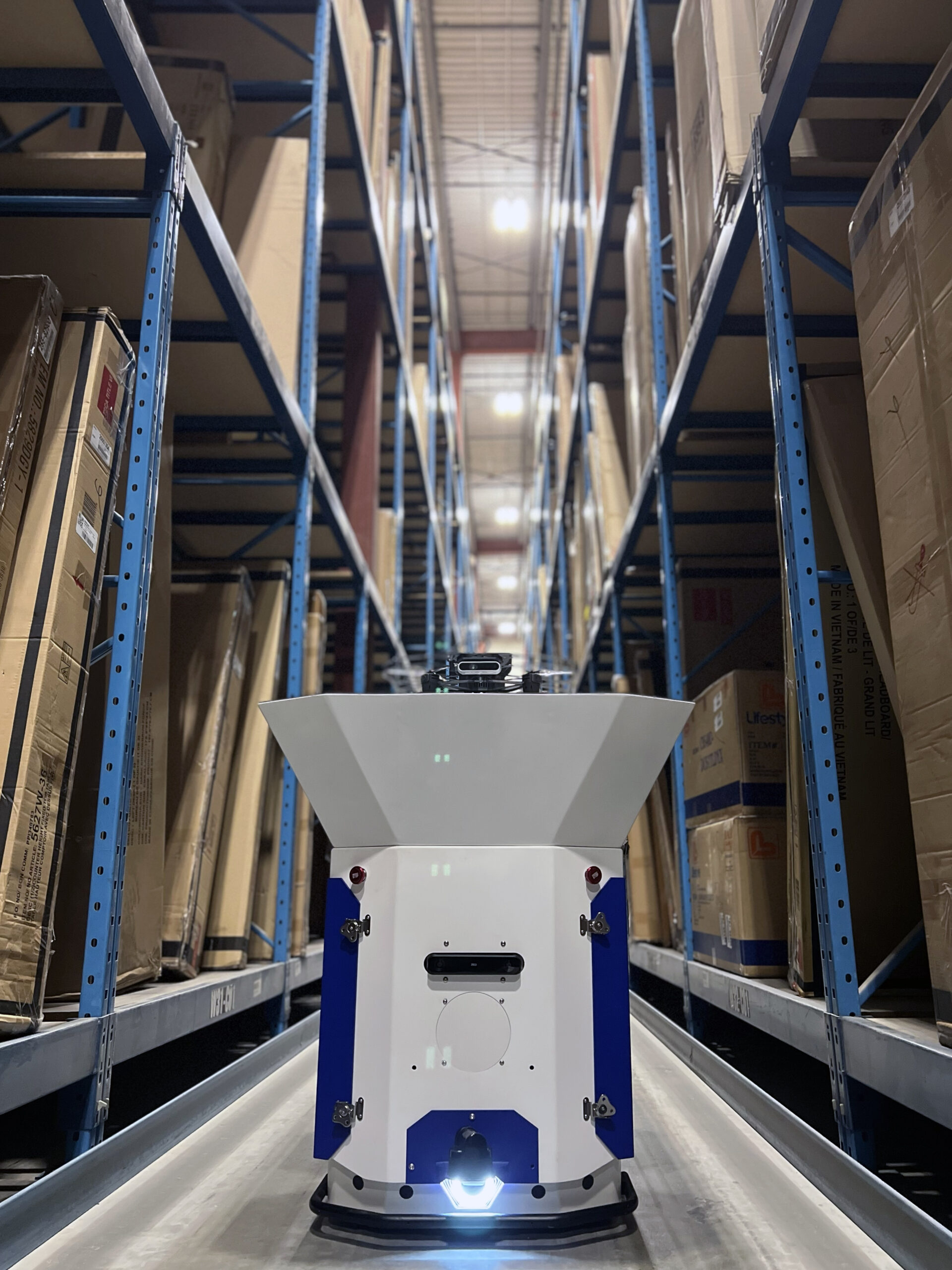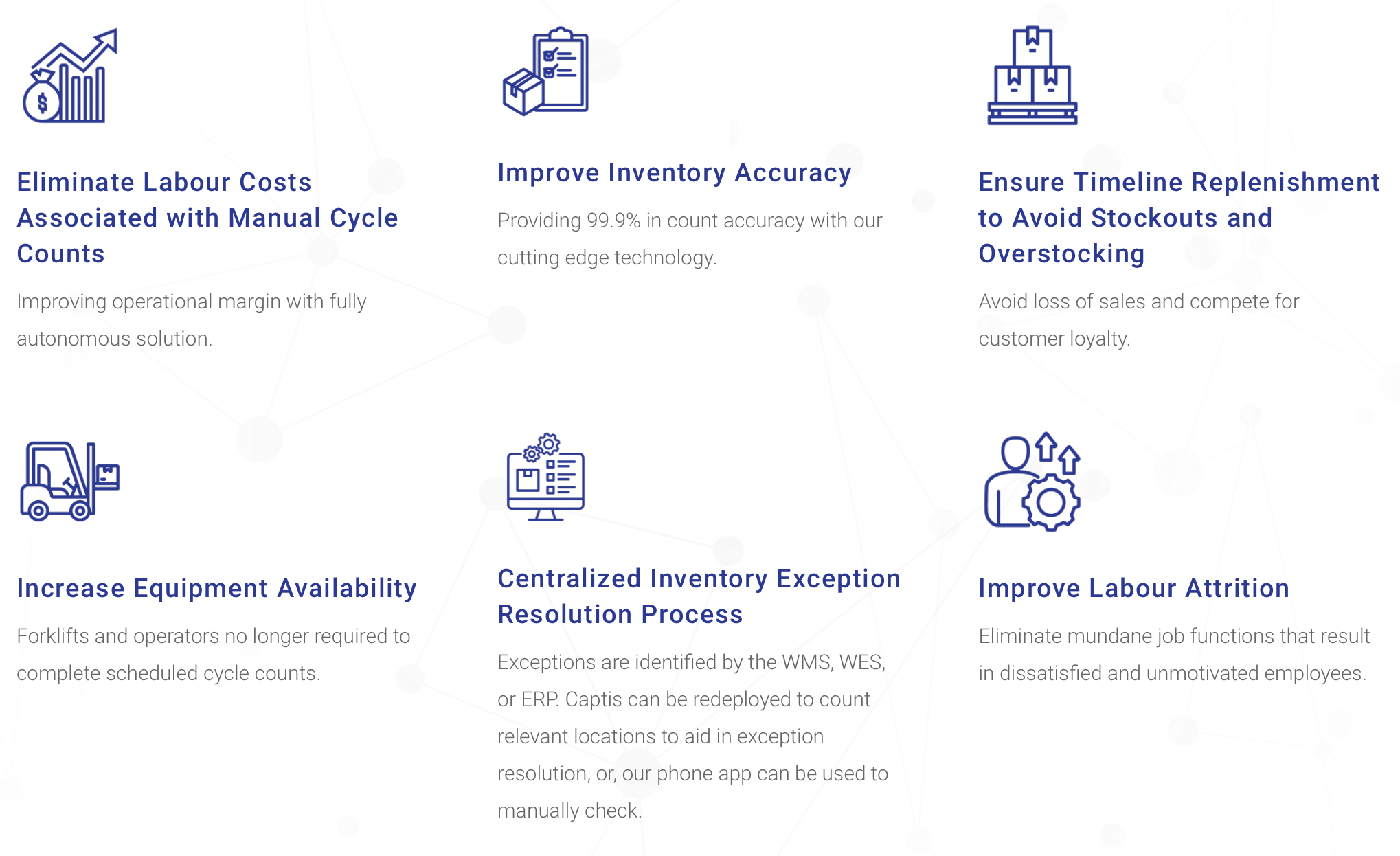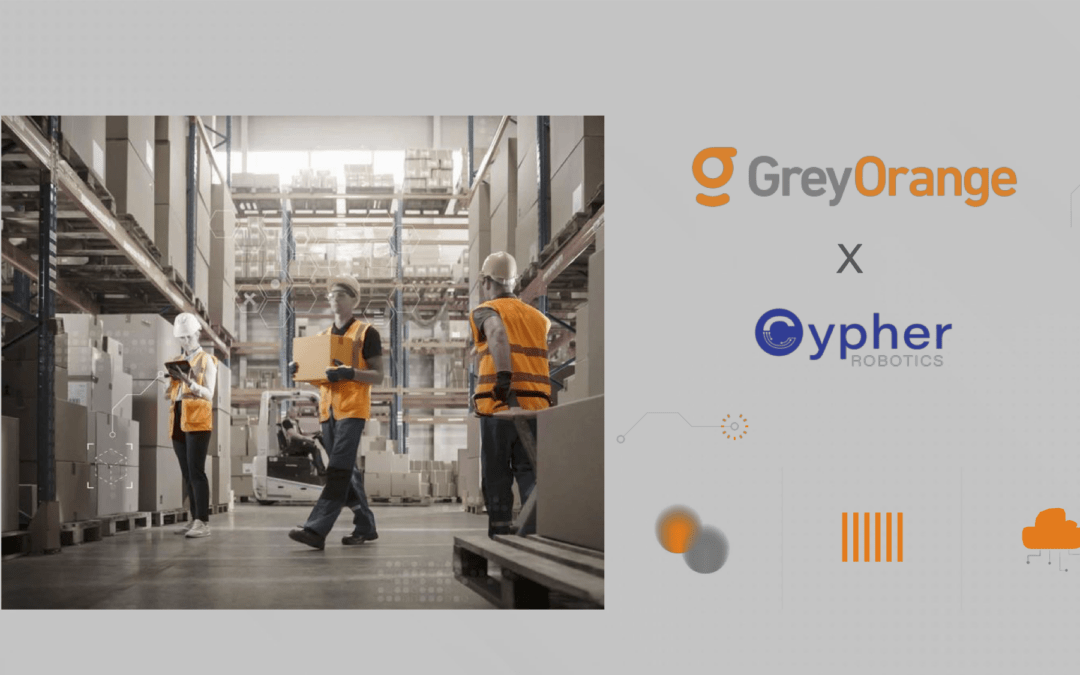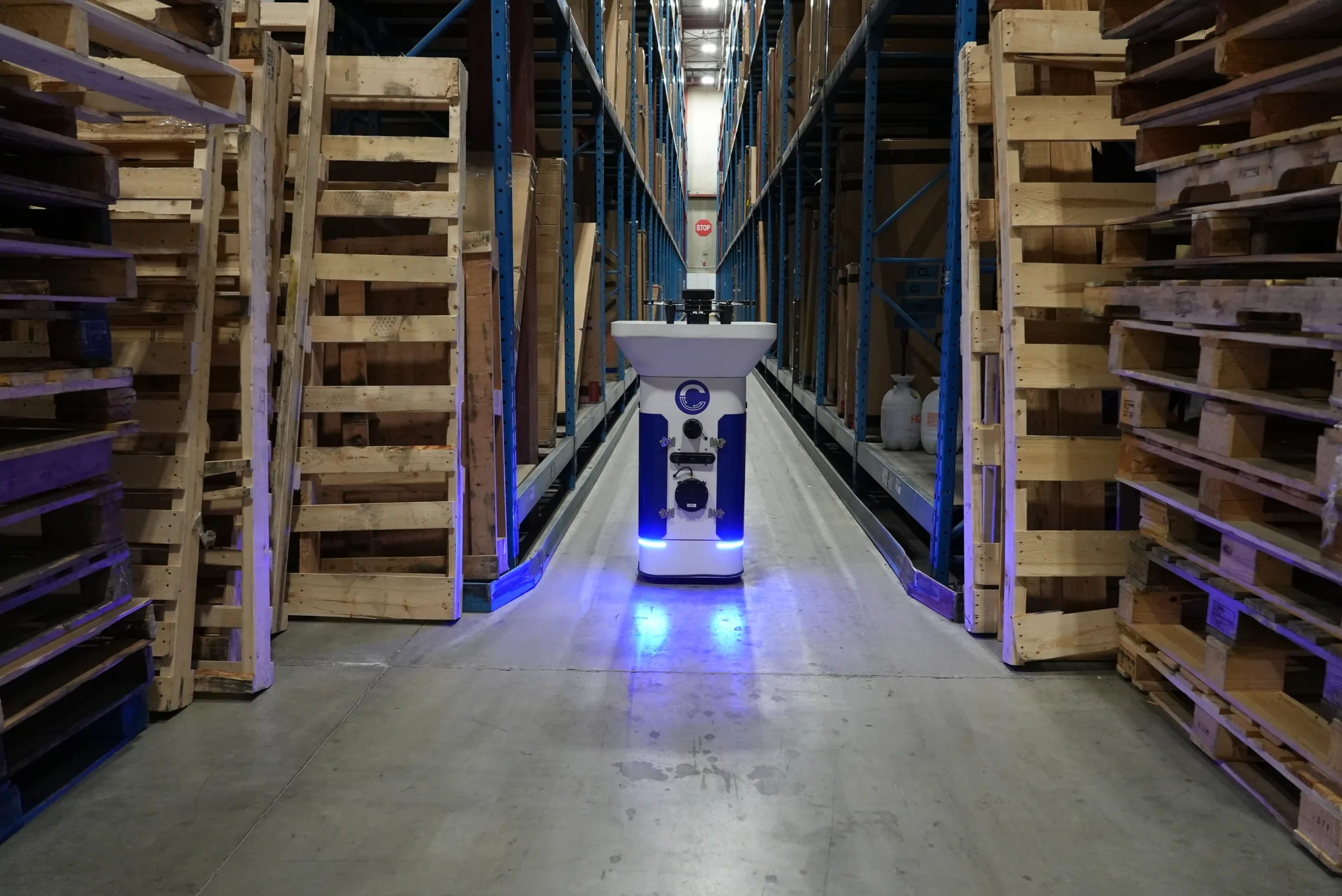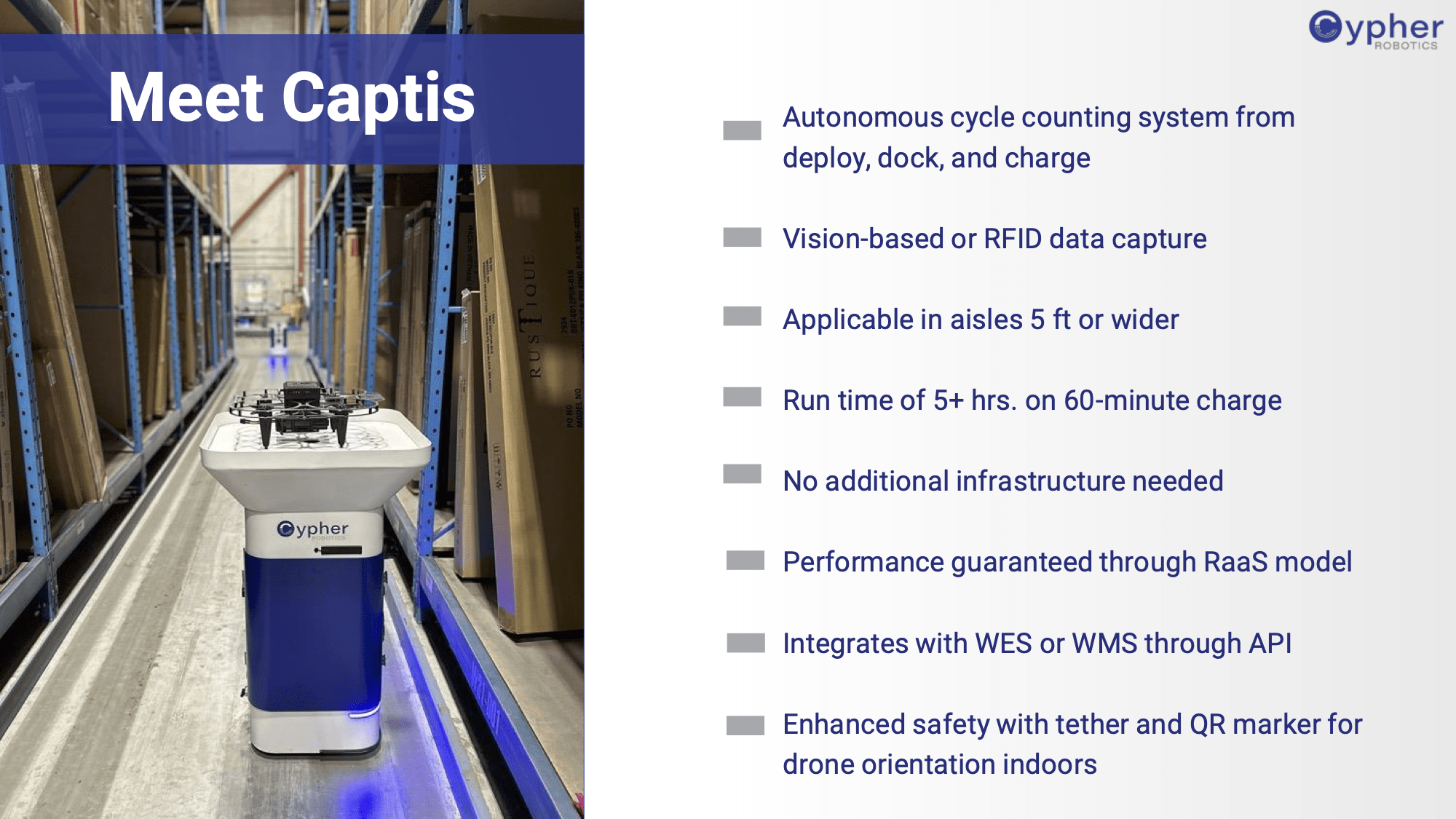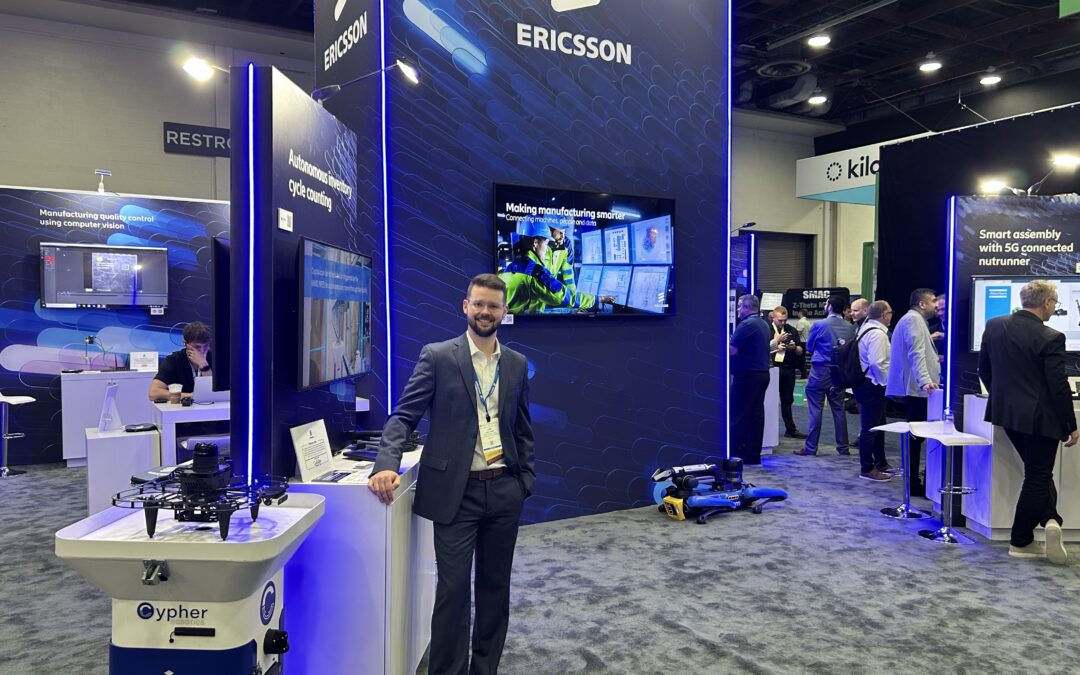
InDro partners with Ericsson at Detroit’s AUTOMATE! show
By Scott Simmie
Cypher Robotics, a company InDro has incubated, is on the road.
And – like it did recently at Hannover Messe in Germany – Cypher has again partnered with Ericsson to showcase technology at a major global technology show. This time around, it’s the big Automate event in Detroit from May 12-15, 2025.
Cypher is showcasing its cycle-counting robot called Captis. It’s a three-in-one Autonomous Mobile Robot (AMR) that can count warehouse inventory, capture RFID tags, and carry out precision scans of an entire facility. Its coolest feature? A tethered drone that can ascend from the base to count inventory at height in the back of massive warehouses.
Captis can also carry out missions as long as five hours before autonomously returning to a wireless recharging base. That’s enough time to count all the inventory in a 100,000 square foot warehouse – all while saving people from the repetitive – and potentially risky – task of working from heights.
But Cypher is doing more than show off Captis. It’s providing a tangible example of how a private 5G network can enable the future of automation.
Above: Cypher Robotics Founder and CEO Peter King (L) on stage at the recent Hannover Messe show in Germany
Below: The Captis system with its tethered drone. InDro Robotics is the incubator for Cypher Robotics

ERICSSON AND 5G
Captis is being displayed at the Ericsson booth. That company is the world leader in telecommunications hardware and software. Odds are high your local cellular provider runs on a network built by Ericsson.
And now, as companies globally transition toward an Industry 4.0 (IR4) world of automation and connected devices, those networks are more important than ever. Secure, high-speed data throughput in the form of private 5G networks is the very foundation of IR4.
“As part of their digital transformation and push towards Industry 4.0, we’re seeing manufacturers make investments in key areas like autonomy, industrial IoT devices and advanced analytics,” says Ericsson’s Jan Diekmann, the company’s Global vertical lead manufacturing – Private 5G Networks.
It is high-bandwidth, low-latency throughput that enables all of this data to stream in real-time. Increasingly, major manufacturers like Jaguar Land Rover (JLR) are installing private 5G networks from Ericsson to handle the task.
“This cutting-edge networking technology is enhancing the production of Range Rover vehicles by supporting business-critical applications such as vision systems, IoT sensors, and production tools,” explains this Ericsson post. “The deployment of Ericsson Private 5G is a pivotal step for JLR in embracing Industry 4.0.”
But why not simply utilise a public 5G provider? The answer is simple.
“If you use a public network, your data goes through that public network,” says Diekmann. “If you have a private network, you get the security that comes with having the data managed by you. You control who sees it, where it goes. You can also accommodate a high density of devices in a small area – which is critical in an Industry 4.0 setting.”
WHY CYPHER ROBOTICS?
Cypher Robotics was invited to display its Captis solution alongside Ericsson both at Automate in Detroit, and at the recent Hannover Messe show in Germany. It’s a hands-on way of demonstrating what a private 5G network can achieve in a real-world setting. All data from Captis is instantly and securely uploaded to a company’s Warehouse Management System.
“That’s the reason we like to showcase use-cases. We’re really trying to help manufacturers see the value of a private 5G network and bring the concept to life,” adds Diekmann.
Below: Cypher Robotics Founder and CEO Peter King, left, along with partners Ericsson and Slolam Consulting

INDRO’S TAKE
InDro is pleased to see Captis and Ericsson once again collaborate on the global stage. As the incubator for Cypher Robotics, we are particularly proud.
“The Captis solution is truly at the forefront of cycle-counting technology, and it’s been very satisfying to assist the Cypher Robotics team overcome some of the demanding technical hurdles,” says InDro Robotics Founder and CEO Philip Reece. “In addition to what it can do for clients, Captis is also a great way for Ericsson to demonstrate the undeniable efficiencies that private 5G networks enable in an Industry 4.0 setting.”
By the way, Captis and our flagship inspection robot Sentinel do more than attend conventions. Both solutions are currently deployed, counting inventory and carrying out daily inspections, with clients in three different countries.
Interested in learning more? Our Head of R&D Sales, Luke Corbeth, loves talking robots. You can reach him here.


